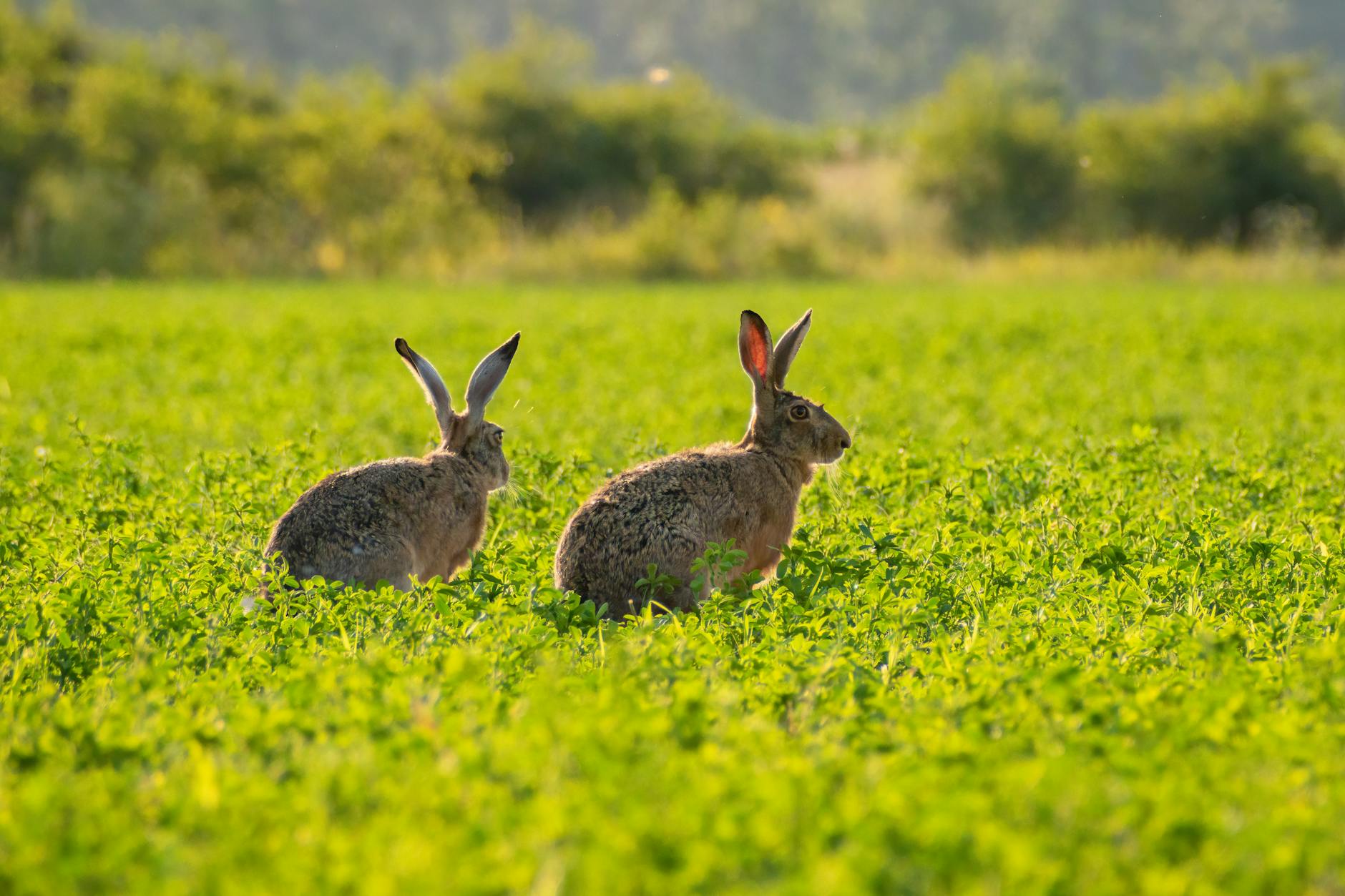March is a month of shifting energies—of winter’s retreat and spring’s first breath. And in the fields and woodlands, a curious sight appears: hares, once solitary, now dashing, leaping, and boxing beneath the pale light of early spring. These are the March Hares, creatures of folklore and mystery, their wild antics woven into myths of madness, transformation, and magic.
From ancient fertility symbols to tricksters in disguise, the hare has long been a creature of legend. Let us follow its swift and winding path through history, exploring the strange and enchanting lore of the March Hare.
Hares and the Madness of March
The phrase “mad as a March hare” has been whispered for centuries, describing both animal and human alike when overcome by the restless energy of the season. The term dates back to at least the 16th century and refers to the unusual behaviour of hares during their spring mating season.
Unlike rabbits, hares are solitary for most of the year, but in March, they become something else entirely. They leap and twist, box one another in the fields, and defy the logic of their usual caution. To the eyes of the old world, this was no mere animal instinct—it was a sign of something magical.
The Hare as a Trickster and a Witch’s Familiar
Hares appear in folklore across the world, often as tricksters, shape-shifters, and magical familiars.
- In Celtic tradition, hares were believed to be closely tied to the Otherworld, and to harm one was to invite misfortune.
- In medieval England, witches were said to transform into hares, using their swift forms to escape hunters and slip between worlds unseen.
- In African folklore, the clever and mischievous Br’er Rabbit is an echo of the old hare trickster myths, a creature who outwits stronger foes with speed and wit.
Superstition: Some believed that a hare seen running across one’s path was an omen, a sign that the veil between worlds was thin.
The Moon Hare and the Goddess
Across many cultures, the hare is associated not just with trickery, but with the moon, fertility, and rebirth.
- In Chinese mythology, the Jade Rabbit lives on the moon, companion to Chang’e, the moon goddess.
- The Celts saw hares as sacred to the goddess Eostre, the deity of spring, from whom Easter takes its name.
- In Norse tradition, hares were linked to Freyja, the goddess of love and fertility, and were seen as symbols of renewal and abundance.
The connection between hares and the moon is likely due to their nocturnal nature, their swift disappearance into the night, and the crescent shape of their long ears, resembling the lunar cycle itself.
The Hare as a Symbol of Transformation
Spring is a time of awakening and change, and the hare embodies this shift perfectly. In shedding its winter solitude, it reminds us to embrace new beginnings, to shake off stagnation, and to leap forward into the unknown.
Ways to honour the March Hare’s energy:
- Embrace spontaneity – Step outside your comfort zone, take a chance, and trust your instincts.
- Observe the natural world – Watch for the first signs of spring, and take inspiration from the cycles of nature.
- Wear a hare talisman – A symbol of quick thinking, luck, and transformation.
The Wild Dance of Spring
The March Hare reminds us that spring is not only about gentle renewal—it is also about mad energy, untamed joy, and the bursting forth of life. It is the season of the trickster, the shapeshifter, the restless soul itching to shake off winter’s weight and run free.
So, when you next see a hare dart across a field or pause beneath the full moon, consider the magic it carries. It is a creature of thresholds, of worlds both seen and unseen, and it has lessons to teach—if you are quick enough to listen.

